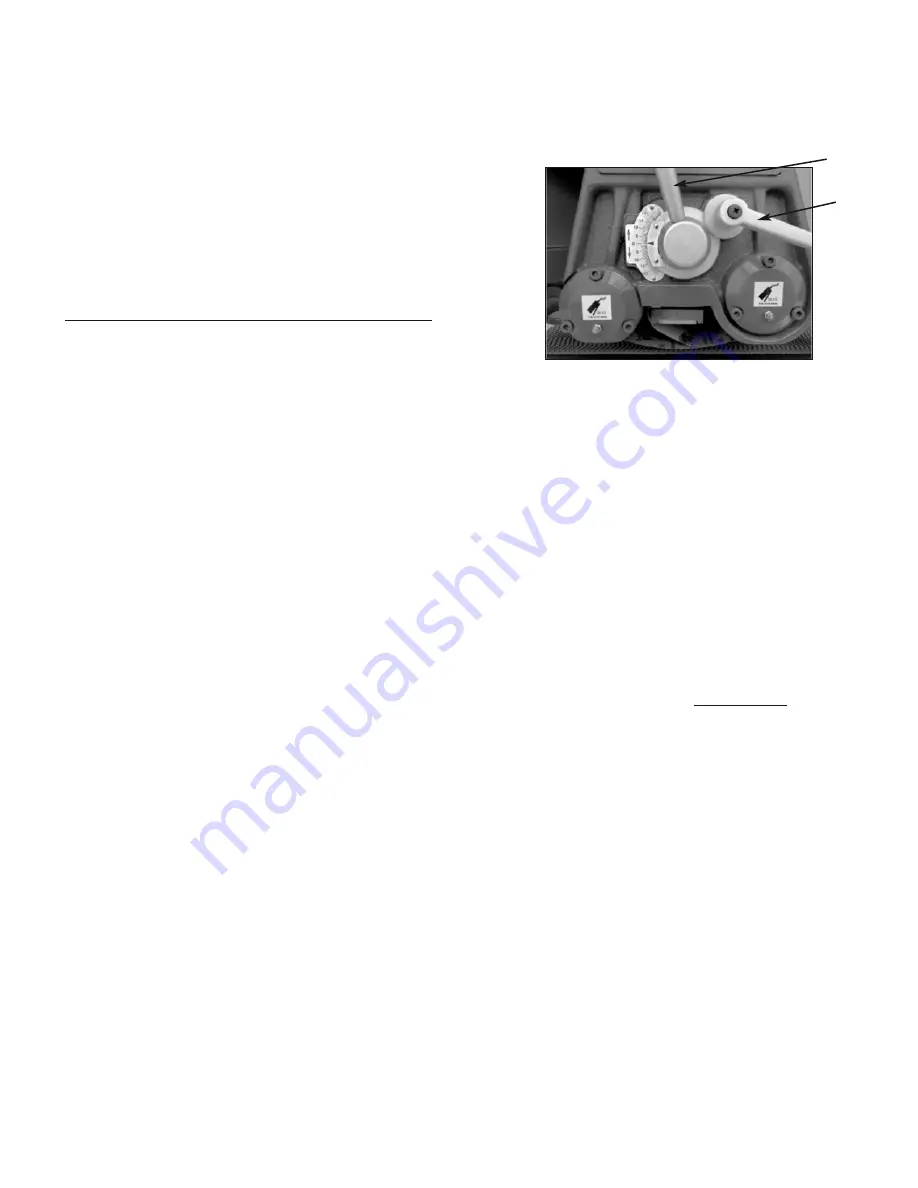
Page 15
◊ AdJusTing THe PLATen
The sander is equipped with a platen with a graphite
pad. It is used during finish sanding to create a buffed
like look and prepare the piece for final hand sanding
and finish coat.
The platen adjusts to 3 basic types of sanding and the
scale is broken down in 0.1mm increments (approx.
0.004”):
Platen up (above 0):
The platen is raised above the
level of the sanding drums (typically set at 1.5 mm
above drum level). So only the drums make contact
with the piece. This position is for heavy sanding or
dimensioning. Coarser grits are used, like grit 100 or
lower, and the finish is rough.
Platen even (=0):
the platen is adjusted level with the
drums, for intermediate finishing passes. Lighter grits
are used, typically grits 100-150 and the depth of cut
should not be more than 0.25 mm (0.010”).
Platen down (under 0):
for finishing pass, typically a
180 grit or higher is used. The platen should be lowered
by no more than 0.2 mm (0.008”) per pass, and not
exceeding 0.5 mm (0.020’’) maximum total below the
drum level, or burn marks and premature graphite wear
will occur.
Do not overuse the platen, expecting to remove marks
beyond its ability to do it. As most graphite pads have
a relatively short life expectancy, make sure you have
spare on hand for quick replacement if needed.
During final sanding pass, you do not need to use the
table handwheel to adjust the sanding depth; the platen
alone will handle this light depth of cut.
NOTICE:
The platen should always be kept clean after
sanding. If the workpiece has straight notches
across it, the graphite cloth and felt have worn out
and should be replaced immediately.
◊ griT seLeCTion
The grit size of the sandpaper designates the
coarseness of the abrasive. The lower the grit number,
the coarser the abrasive. With coarser grit papers, such
as 60 grit, very aggressive material removal and
surface scratching occur. With finer grit abrasives, very
little material is removed and a buffed like look begins
to appear. The table below shows different types of grit
and their uses.
DESCRIPTION NORMAL USE
60 Grit sandpaper surfacing and dimensioning
boards, truing warped boards
80-100 Grit sandpaper surfacing, light dimensioning,
removing planer ripples
120 Grit sandpaper light surfacing, minimal stock
removal
150 Grit sandpaper finish sanding, minimal stock
removal
180 Grit sandpaper finish sanding only, no stock
removal
A general rule is to sand the piece by gradually
increasing the grit of the abrasive, but not exceeding a
difference of 50 between 2 consecutive grits
(ex. 100-150). The type of wood and the desired finish
will determine the grit to use.
Z
Y
Summary of Contents for TITANIUM 50-410
Page 17: ...Page 17 eLeCTriCAL sCHeMATiC...
Page 18: ...Page 18 eLeCTriCAL sCHeMATiC...
Page 20: ...Page 20...
Page 22: ...Page 22...
Page 24: ...Page 24...
Page 26: ...Page 26...
Page 28: ...Page 28...
Page 30: ...Page 30...
Page 32: ...Page 32...
Page 34: ...Page 34...
Page 35: ...Page 35...
Page 36: ...Page 36 u noTes u...
















































